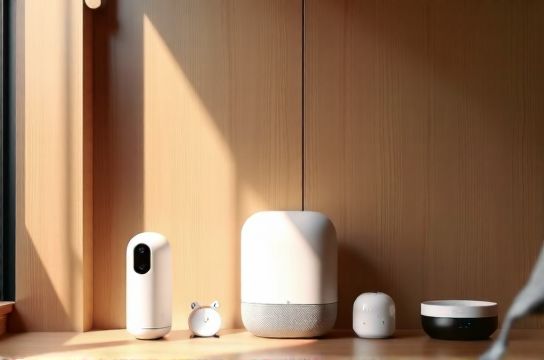Smart Design Lifestyle Products China for Urban Professionals
- 时间:
- 浏览:53
- 来源:OrientDeck
Living in a fast-paced urban environment? You're not alone. Millions of professionals across China's megacities—from Shanghai to Shenzhen—are redefining modern living with smart, minimalist, and functional lifestyle products. These aren’t just gadgets; they’re daily companions that blend tech, design, and practicality.

Why Smart Design is Taking Over Chinese Cities
In cities where space is tight and time is tighter, urban professionals are turning to intelligent design solutions. Think compact air purifiers that double as mood lighting, foldable e-bikes for last-mile commutes, or multi-functional kitchen appliances that save precious square meters. According to Statista, the Chinese smart home market is projected to reach $104 billion by 2025—up from $48 billion in 2021. That’s massive growth driven by young, tech-savvy city dwellers.
Top 5 Must-Have Smart Lifestyle Products (2024)
Here’s what’s flying off shelves in Beijing co-living spaces and Shanghai high-rises:
| Product | Brand | Key Feature | Price Range (CNY) |
|---|---|---|---|
| Smart Air Purifier + Humidifier | 352 | Auto-pollution detection & app control | 1,200–1,800 |
| Foldable Electric Bike | Segway Navimow | Compact, 30km range, GPS tracking | 3,500–4,200 |
| Induction Cooker with AI Timer | Midea | Preset recipes & voice control | 600–900 |
| Noise-Canceling Smart Lamp | Xiaomi Yeelight | Adjustable color temp & sound masking | 400–700 |
| Modular Storage System | MINISO Home+ | Stackable, magnetic units | 200–500 |
These picks aren’t random—they’re based on real user behavior. A 2023 survey by iResearch found that 68% of urban Chinese professionals prioritize "space efficiency" when shopping for home products, while 74% value app integration for remote control.
Design Philosophy: Less Clutter, More Control
Chinese smart lifestyle brands aren’t just copying Western models—they’re innovating. Take Xiaomi’s ecosystem approach: devices talk to each other seamlessly via Mi Home. Or look at Observe, a rising brand blending Scandinavian minimalism with local usability insights. Their bamboo-framed smart mirrors? Huge in Chengdu apartments.
The secret sauce? Human-centered design. Products are tested in real micro-apartments, ensuring every button, curve, and feature serves a purpose. No gimmicks—just thoughtful engineering.
Where to Buy & Pro Tips
Want these goodies? Head to Tmall’s "Smart Living" section or JD.com’s curated urban lifestyle hub. During Singles’ Day, discounts can hit 30–50%. Pro tip: Look for products labeled "IoT-ready" and check compatibility with your existing ecosystem (e.g., XiaoAI, Alexa).
Also, don’t overlook local design fairs like Shanghai Design Week—they’re goldmines for emerging brands before they go mainstream.
Final Thoughts
Smart design in China isn’t about flashy tech—it’s about solving real urban problems with elegance and efficiency. Whether you’re a busy banker in Pudong or a startup founder in Haidian, these products aren’t luxuries. They’re essentials for staying sane, productive, and stylish in the concrete jungle.